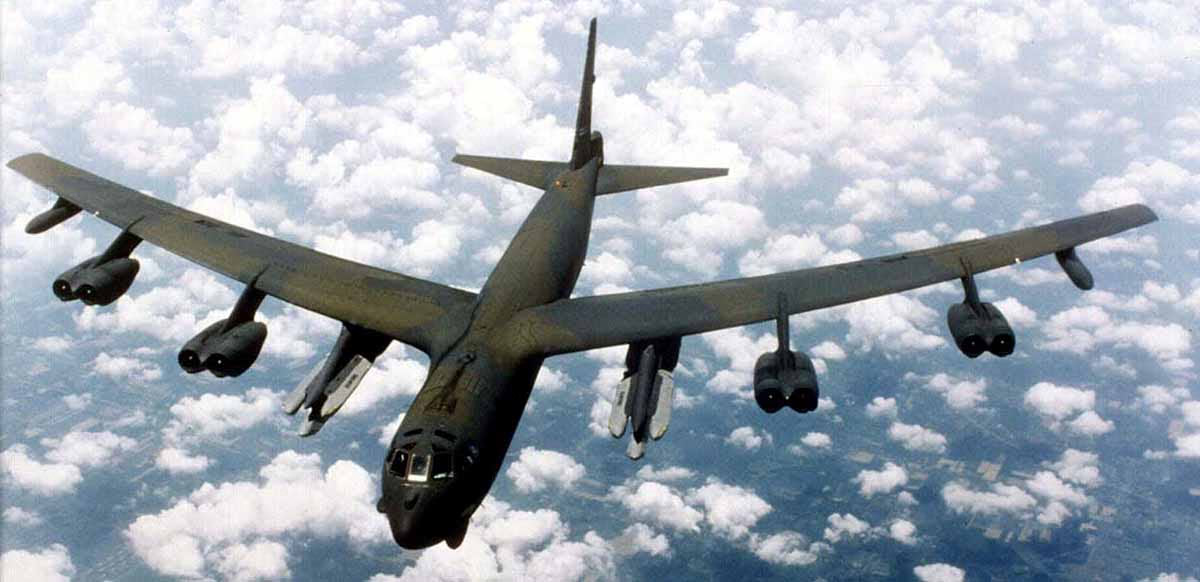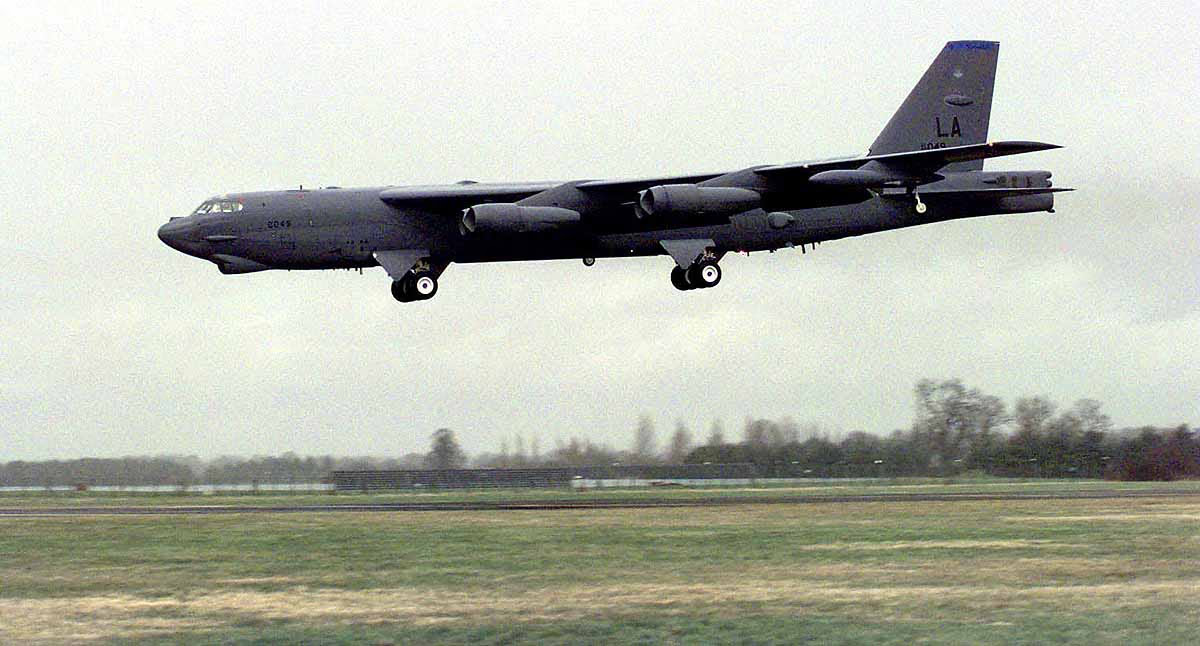According to an article published on May 21, 2025, in the South China Morning Post, Chinese defense experts have labeled the U.S. B-52H Stratofortress bomber as exceedingly dangerous. It is a formidable asset in America's strategy for potential nuclear strikes against China.
Studies led by Wang Bingqi at Wuhan's PLA Air Force Early Warning Academy revealed this insight. Published in the magazine Modern Defense Technology, the research examined numerous U.S. Air Force weapons, discovering that the B-52H excels in deployment, airspace infiltration, and offensive operations.
Also Read: Operation Sindoor: IAF's BrahMos Strike at Bhola Air Base

Source: aajtak
B-52H: Old Yet Potent
Crafted during the Cold War era in the 1950s, the B-52H bomber has undergone multiple modernizations, making it vital to the U.S. nuclear triad. Military Balance 2025 reports indicate that the U.S. Air Force operates 58 B-52H planes, with 46 capable of carrying nuclear armaments, establishing them as foundational to America's aerial nuclear capability.
The Strength of B-52H
This bomber carries various nuclear weapons, notably the AGM-86B Air-Launched Cruise Missile (ALCM) featuring the W80-1 thermonuclear warhead, ranging in yield from 5 to 150 kilotons. It is slated to arm with the AGM-181 Long-Range Standoff (LRSO) missile in the future, capable of penetrating robust enemy defenses.
Also Worth Exploring: The Rifle That Pierced Bunkers—BSF's Triumph Over PAK's Fronts in Operation Sindoor

Source: aajtak
The B-52H's noteworthy feature is its ability to attack from beyond enemy radar and missile detection range, with a flight reach of 7200 kilometers on a single refueling. Its capability to refuel mid-air enables it to target any corner of the globe.
It can linger in the skies for extended periods and execute swift assaults, integrating with the U.S. Joint All-Domain Command and Control (JADC2) system for precise strikes alongside other armament.
Challenge to China
Despite China's formidable defense systems like HQ-9B and Russian-acquired S-400, the B-52H's long-range missiles diminish their impact. This bomber poses a tangible threat to China's military bases and command centers with its loaded precision weapons.
For Further Insight: Why Indian Forces Must Equip 5th Generation Fighter Jets—A Comparison with Existing Jets

Source: aajtak
U.S. Strategy
The U.S. employs aerial nuclear capabilities for several strategic reasons. They facilitate controlled actions amid conflicts and offer agility to reposition swiftly, deterring adversaries and averting war. This approach is critical for U.S. allies in Asia and Europe.
China's Concerns
China's research underscores that aircraft like the aging B-52H, when combined with new weaponry, pose significant dangers. As tensions rise in the Indo-Pacific, China's military is prioritizing countermeasures against America's long-range nuclear strike prowess. Despite its age, the combination of strength and modern technology renders this bomber particularly formidable today.




